The night is hot and still. We are anchored under the Bahia Honda Bridge in the lower Florida Keys. The tarpon set up here, holding in the current. Squatting behind the helm of The Finest Kind, Captain Don threads a live mullet onto a hook, then passes the broomstick-thick boat rod to his angler, Annette. I’ve been allowed to cover the Marathon Tarpon Tournament for Audubon magazine on condition I record time fishing begins and ends and report all cheating.
Has cheating occurred? To my chagrin, I cannot say. I’m awakened at 1:10 a.m. by a whoop. Six feet of iridescent fish hangs across a tropic, star-strewn sky, then crashes into the sea. Gut-hooked and overpowered by the heavy tackle, the big tarpon tires in ten minutes. Captain Don gaffs it, and with both hands hauls it aboard. Its eyes are large and luminous, scales the size of canning lids. It is probably older than any of us. For 20 minutes it thrashes in a pool of blood and feces, then dies.
No one tastes tarpon meat more than once; in a pinch it could stand in for ipecac. So after weigh-in next morning Annette’s fish, along with eight others, are pitched off the Bahia Honda Bridge. I ask the chair of the “Tarpon Disposal Committee” if anyone has tried grinding up tarpon for chum. “Hell no,” he replies. “A tarpon would break the machine. There’s no use at all for ‘em. They’re prehistoric like a crocodile, and what use is a crocodile?”
That night I interview Steve Huff, dean of fly-fishing tarpon guides. For the past 12 years he has been poling his clients over sunlit flats, spotting, stalking, reading the water. I ask him what he thinks of the kind of tarpon fishing I’d been observing. All he says is: “If they move the bridge, you’re in trouble.” The year is 1980.
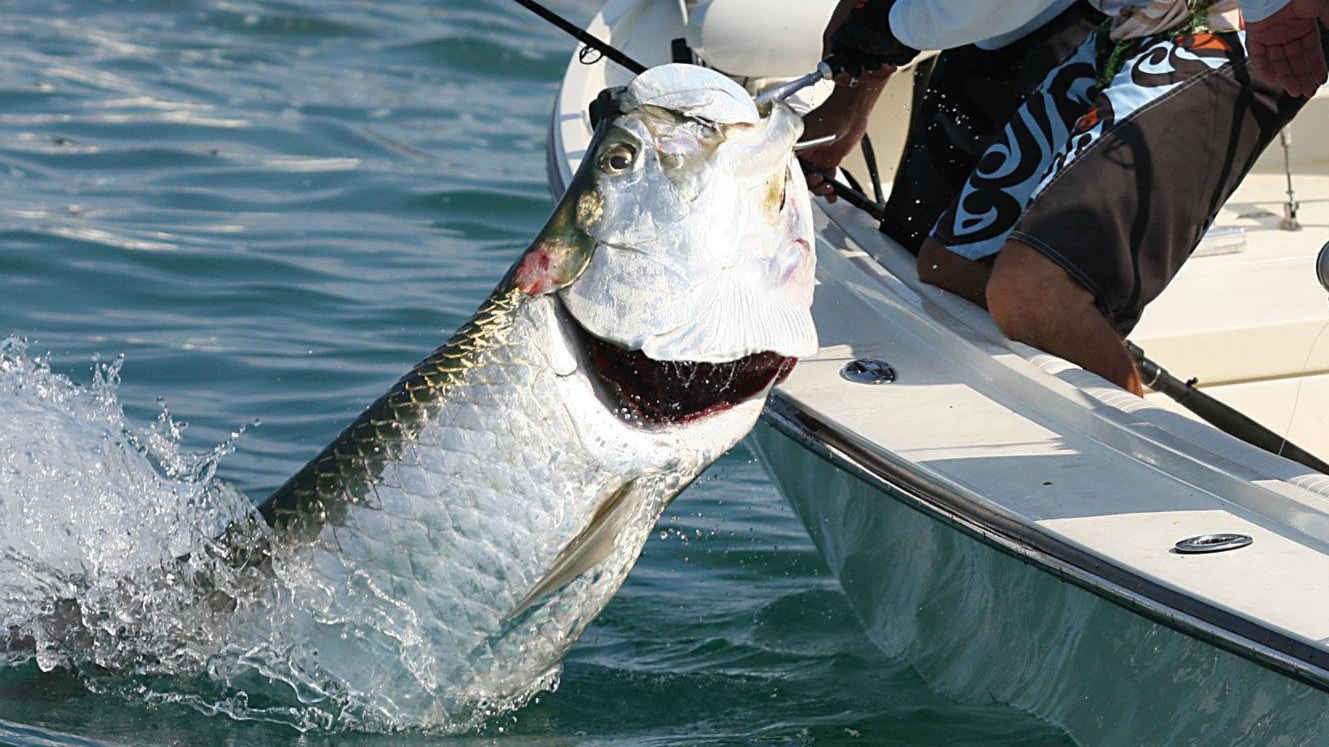
Fish lack fur and feathers. They’re cold, slimy and, for most people, unseen. Even today few Americans consider them wildlife; but at least our angling ethics and respect for fish are recovering. Most tarpon states now sharply limit the number of tarpon you can kill. In 1994 Texas imposed a one-fish limit of at least 80 inches, which would have meant a new state record (now the minimum size limit is 85 inches). In 2013 South Carolina followed suit with a one-fish limit of 77 inches. After 1989, the year Florida made it illegal to kill a tarpon unless it exceeded the state record, the population surged; and fish piled back into Boca Grande Pass, a staging area for gravid females.
But then in 2004 a televised competition called The Professional Tarpon Tournament Series (PTTS) started up in Boca Grande Pass. Technically it was catch-and-release. In reality it was snag with huge, heavily-weighted hooks, gaff, drag to shore, photograph, hoist, weigh, release, and feed the sharks which, like the media and public, congregated for the event. Boats were gunwale to gunwale, contestants cheek to jowl.
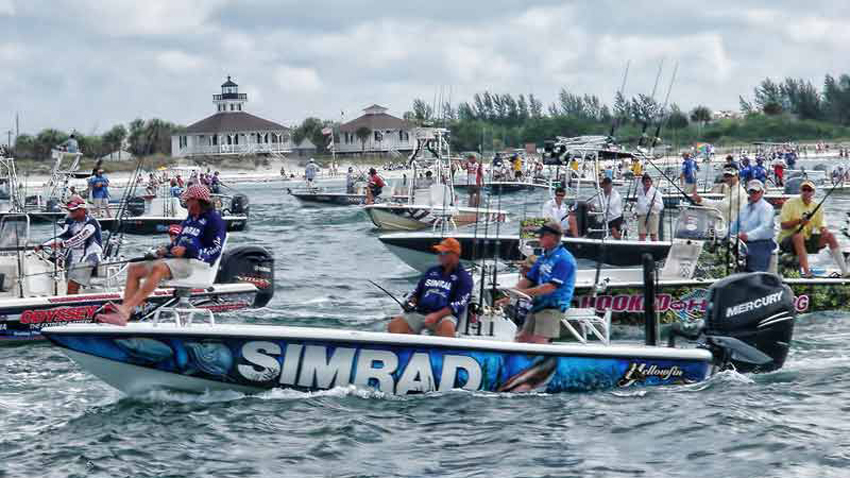
“It was gross,” declares, marine activist Dr. Brandon Shuler, author of the acclaimed book Glory of the Silver King: The Golden Age of Tarpon Fishing. “You’d see a fish jumping with four boats over this person’s line. It was crazy, not even fishing. They placed so much stress on these fish that a couple days later you’d start to see the carcasses washing up on the beach.”
A group called Save the Tarpon took on the mission of restoring angling ethics, respect for the fish, and the fish themselves to Boca Grande Pass. On its website Save the Tarpon explained that its opposition to the tournament “stems from the destructive, unethical fishing practices and unsportsmanlike conduct promoted by this for-profit fishing tournament and television show,” noting that it had changed migration patterns and degraded fishing quality.
Save the Tarpon distributed a video of the tournament and urged the public to boycott its sponsors, most of which promptly dropped out.

This triggered what Save the Tarpon chair and founder, fly-fishing guide Tom McLaughlin, calls a “SLAPP suit” (Strategic Lawsuit Against Public Participation) by PTTS demanding $500,000 in damages and relief in the form of silence to public and press. PTTS kept asking for and receiving trial postponements. Finally the judge ran out of patience. On November 16, 2015, the night before its mandatory court appearance, PTTS dropped the suit. But over the course of almost three years Save the Tarpon had to pay $200,000 in attorney fees.
“This case was ultimately about free speech and the growing threat these frivolous SLAPP suits pose to your right, our right, to speak up and speak out on matters of public policy that are vital to this community and, in a larger sense, this nation,” McLaughlin told the Boca Beacon.” SLAPP suits were outlawed by the Florida legislature during the PTTS litigation.
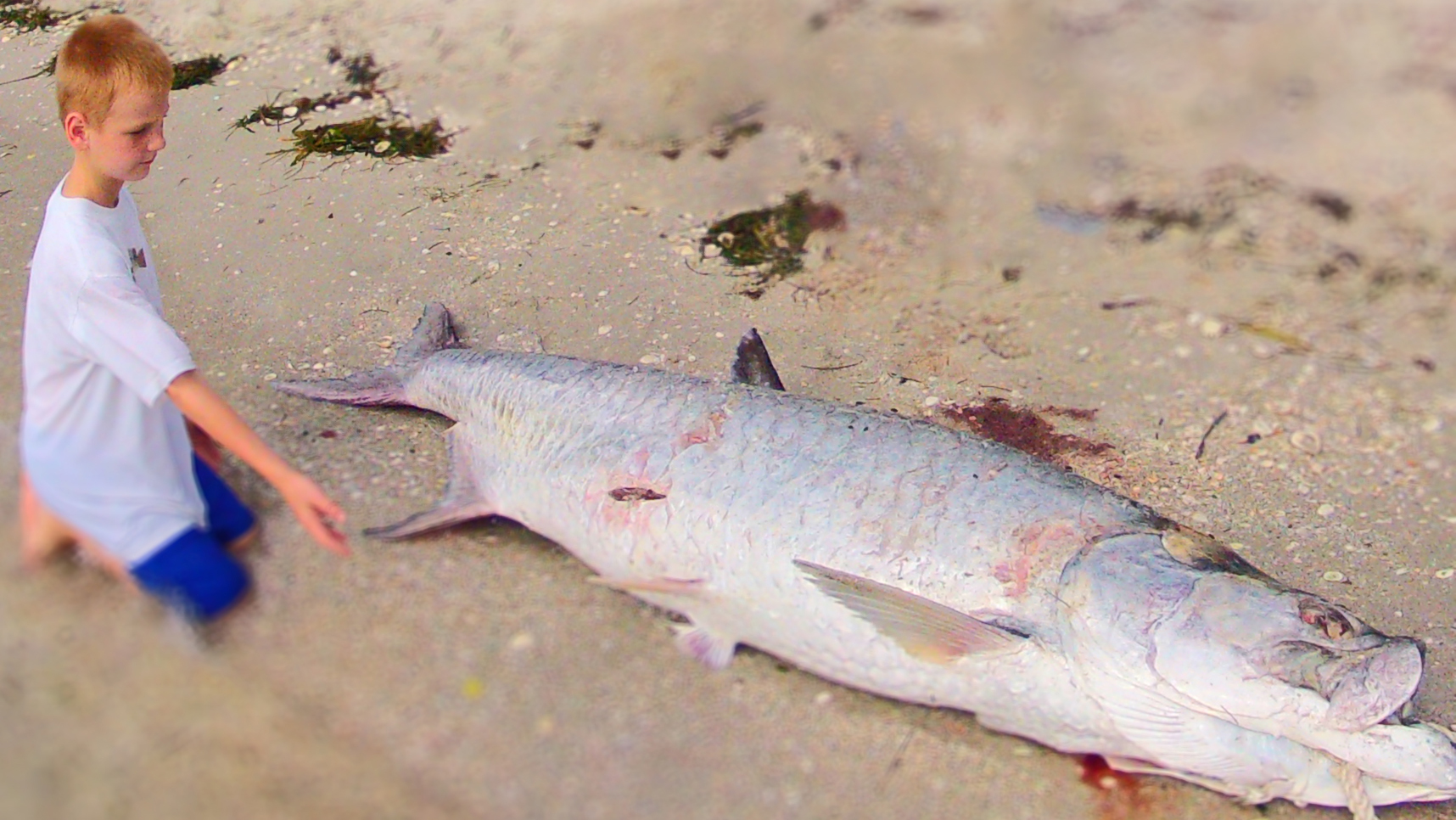
PTTS owner, Gary Ingman, doesn’t describe his effort as a “SLAPP suit,” and he feels his tournament has been misrepresented by locals and media. But he spoke to me on condition I not quote him.
Largely through the efforts of Save the Tarpon the state made it illegal to use PTTS-style snagging jigs and to boat any tarpon over 40 inches. PTTS shut down its tournament in 2016.
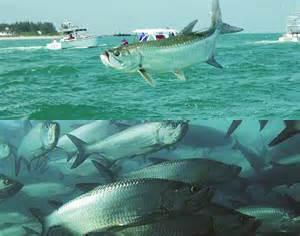
The surviving tournament at Boca Grande Pass, hosted by the Boca Grande Area Chamber of Commerce, is called the “World’s Richest Tarpon Tournament.” In 2017 winnings totaled $108,000, $32,400 of which was collected by the first-place team aboard Hey, Moma.
“I’m not a big proponent of any fishing tournament,” says McLaughlin. “I don’t think the World’s Richest Tarpon Tournament damages the fishery. I think what’s damaging is the fishing-tournament mindset. In a redfish tournament, for example, contestants will burn the flats because they’re trying to make money. On a normal day those guys will run the channel and be more respectful of the fish and other anglers.”
Still, the World’s Richest Tarpon Tournament is evidence of major recovery in angling ethics and respect for fish. Size doesn’t matter. The tournament stopped boating, dragging, weighing, measuring and killing long before the regs required it to do so.
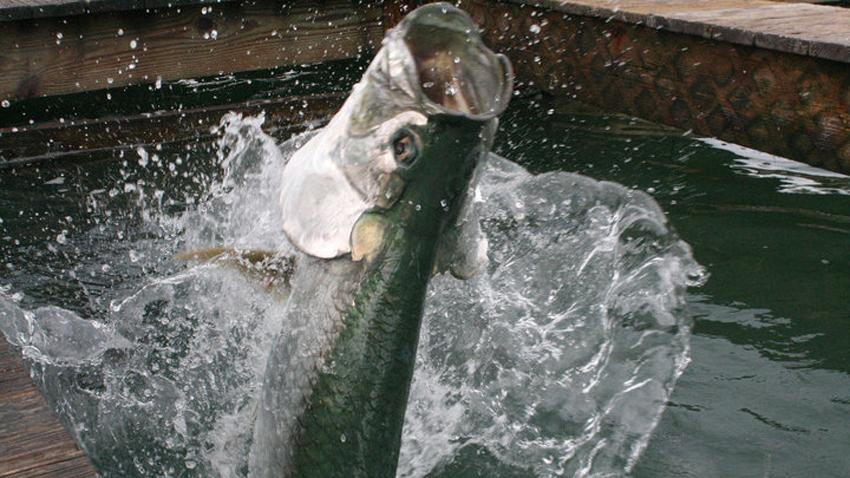
“We’re working with Bonefish and Tarpon Trust on an educational video series about proper handling of tarpon,” says tournament director and head judge Candy Brooks. “I can tell you that PTTS values do not align with our values.”
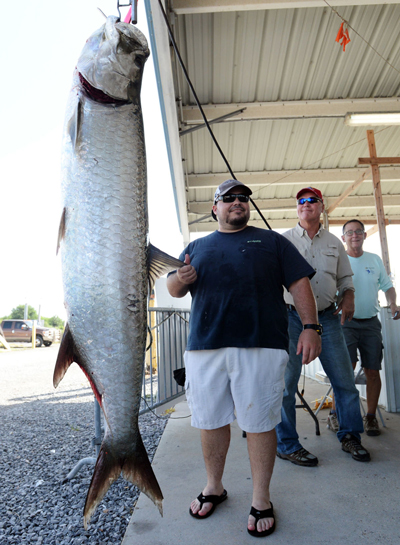
Because tarpon are such vile tablefare the only anglers who regularly kill them are contestants in two Louisiana tournaments. They don’t kill enough to affect the population, but MidCurrent, the online provider of fly-fishing news, literature and advice, offers this: “In our opinion the worst thing about kill tournaments for fish like tarpon is not the death of the animals; it’s the message that the rules send to the community of anglers (and soon-to-be anglers) about acceptable behavior, connecting dead fish to prize money.”
The Grand Isle (Louisiana) International Tarpon Rodeo, entering its 90th year in 2018, is the oldest fishing competition in the U.S. Jeff DeBlieux, a widely respected advocate of fish, wildlife and ethical fishing and hunting, has fished it since 1977. He catches and releases lots of tarpon, some in the Rodeo’s no-kill division. But there’s also a dead-on-the dock division which he defends by noting, accurately enough, that “you can’t get the weight of a tarpon just by looking at it.”
When I asked DeBlieux how many tarpon the Rodeo usually kills he replied: “The word ‘kill’ is a bad word. That word ain’t never coming out of my mouth. Nobody down here uses the word ‘kill.’ We catch fish, and we boat fish.” True, but the boated fish die and get tossed.
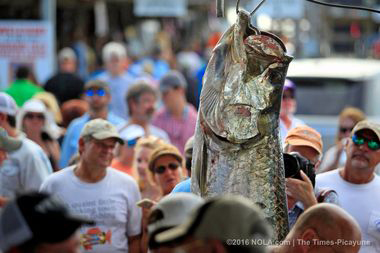
The 62-year-old Terrebonne Parish Sportsman’s League Annual International Fishing Rodeo is another Louisiana tournament that kills tarpon.
In August I reconnected with tarpon guide Steve Huff. Now he’s 71 and even more of a legend than when I last interviewed him at Marathon, Florida in 1980. On November 1, 2018 he’ll have been guiding for exactly half a century. Then he plans to cut back so he “can go fishing.”
“I think people have come to realize what a precious resource tarpon are,” Huff told me. But, noting that recovery of ethics and respect is still in progress, he left me with this: “I think it’s tragic to kill a magnificent animal that’s very likely 30-50 years old just so you can strut and beat your chest.”
Not many tarpon get killed at Louisiana tournaments — usually under a dozen a year. Again, there is no effect on the population; but for tarpon advocates like Huff and McLaughlin that’s not the point. And as MidCurrent notes, the trouble with tournaments is not so much what they do to fish but what they do to people.
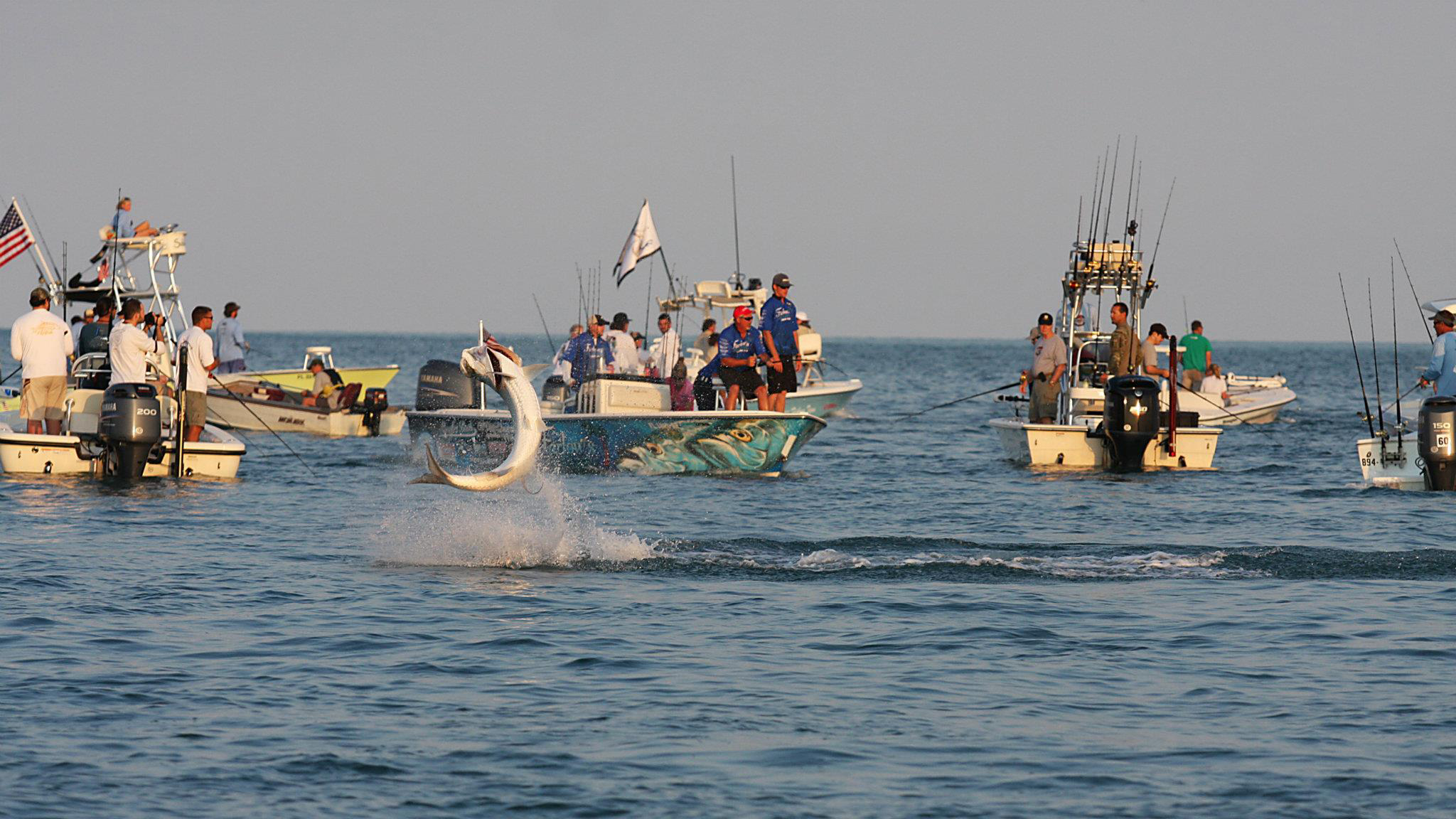
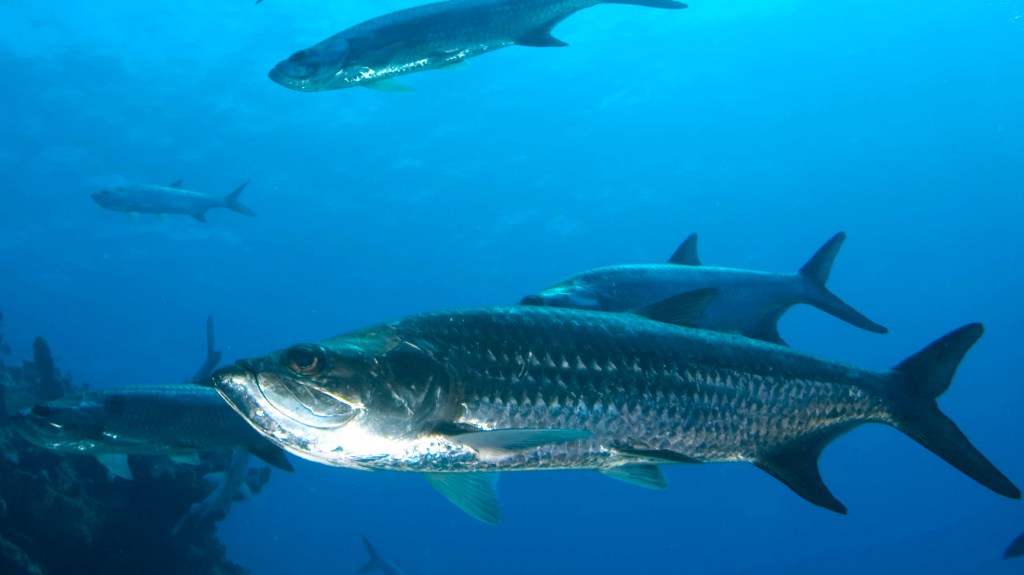



This is Tom McLaughlin, founder and President of Save the Tarpon (his son is waving the sign)!
https://youtu.be/815o0vI5lO4
As a life long fisherman and hunter, I despise these fishing tournaments. We are treating our precious wildlife heritage like it’s part of some kind of video game. It doesn’t matter if even one of these magnificent fish are killed, it make us sportsmen look bad. It makes us look like we are killing wildlife just for the sake of our amusement. It’s no wonder the forces behind the anti fishing and hunting movement are getting stronger. These fishing tournaments are helping us become our own worst enemy.
Hey Norman: Actually, I read that piece with care during my research. Great stuff! And thanks. I filed it away for the future. For my Cool Green Science “Recovery” column I have to stay focused on single issues — in this case tournaments. My word limit prevented me from veering into the federal waters issue, though I will say I was tempted. Again, thanks for posting a very important piece.
You seemed to have missed some of the articles we published in flylifemagazine, check them out!
http://flylifemagazine.com/conservation-more-on-legal-tarpon-killing-in-federal-waters/
Assuming you can’t end the tournaments anytime soon…horses are weighed by measuring their girth presumably fish length and girth could be easily fitted to a curve to estimate weight accurately.
True not only of tarpon but every gamefish species that involve “tournaments” that kill the fish that the participants supposedly value. There aren’t hunting “tournaments” that involve mass participation and killing of a species that I am aware of. Fishermen have the option to play god with every fish they catch – “Thumbs up or thumbs down”. I will always vote for “Thumbs up” when it comes to game fish.
I don’t hunt or fish, but I want the ethical versions of both activities to continue. That’s partly for selfish reasons — those activities pay for wildlife habitat. And deer hunting in particular is now vital to what’s left of the ecological health of the Cornbelt.
That is one reason why this well-written piece almost made me lose my lunch. Apart from all the other thing that are very wrong with this gross fish abuse, what does it do to the image of fishing? Already there is an anti-fishing movement and this does not help.
A smart, ethical, amateur deer expert bowhunts my land every fall. I carry wasps and craneflies out of my house and release them. Both of us are expressing our respect for nature. The people who do this horrible kind of tarpon fishing are respecting no one and nothing, least of all themselves.
” “I’m not a big proponent of any fishing tournament,” says McLaughlin. “I don’t think the World’s Richest Tarpon Tournament damages the fishery. I think what’s damaging is the fishing-tournament mindset. In a redfish tournament, for example, contestants will burn the flats because they’re trying to make money. On a normal day those guys will run the channel and be more respectful of the fish and other anglers.” ” — And the above is the main point – professional tournament anglers no longer qualify as “sportsmen”, they become whores for the marketing of products, which is the reason there are professional tournaments. Its time to “drive the money changers from the temple” of angling. Which brings us back to – ” — the trouble with tournaments is not so much what they do to fish but what they do to people.”
well done and thank you for telling it like it is! if you kill it you should eat it! why kill tarpon?
Killing anything just for the sake of killing it is a crime against nature. Every species – whether good table fare or not – is valuable in its own right and should be respected as such. A pox on the houses of people who destroy anything just for the thrill of it, which is something no good conservationist would ever do.
Good piece. Thanks. I’ve long more or less quietly despised tarpon fishing because of the sort of behavior described here. It’s an aquatic cousin of shooting Cecil the lion. I don’t oppose sport fishing that allows for survival of the caught and released, and I don’t oppose fishing for dinner–always within reasonable limits, with sustainability of fish populations a requirement. But this kind of thing–catching a fish, often with barbarous methods, simply to lay claim to some sort of false certification of individual supremacy, is reprehensible.